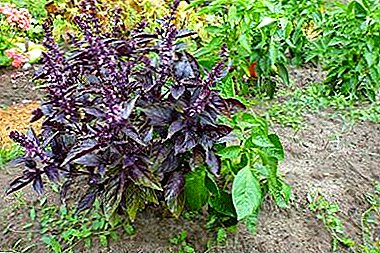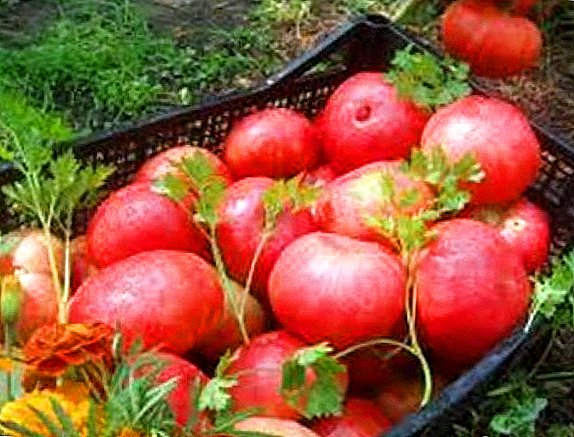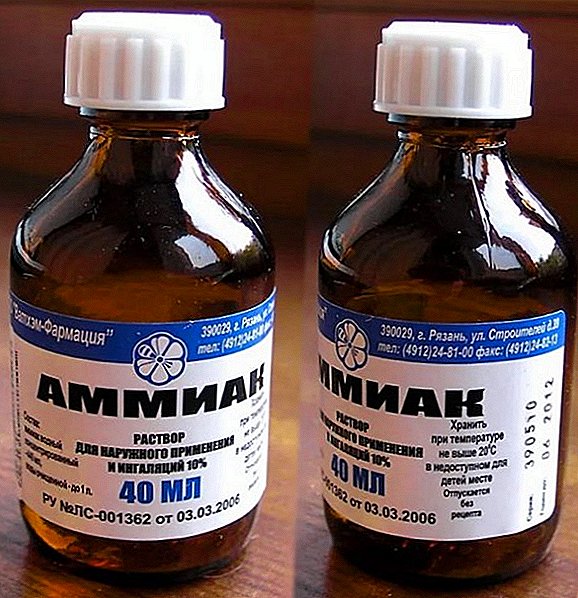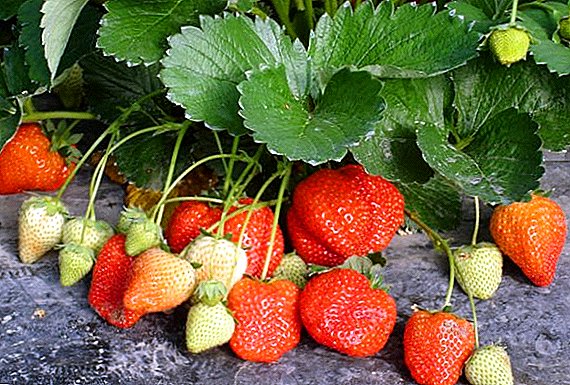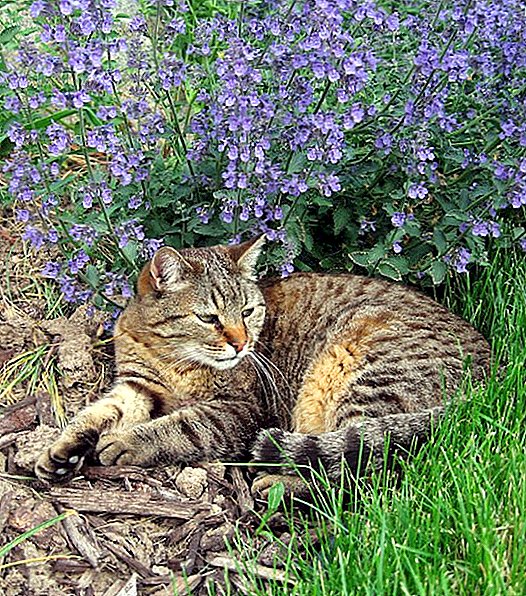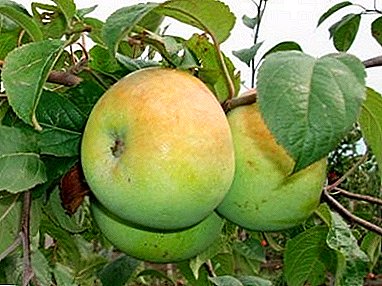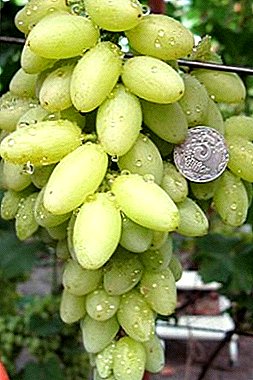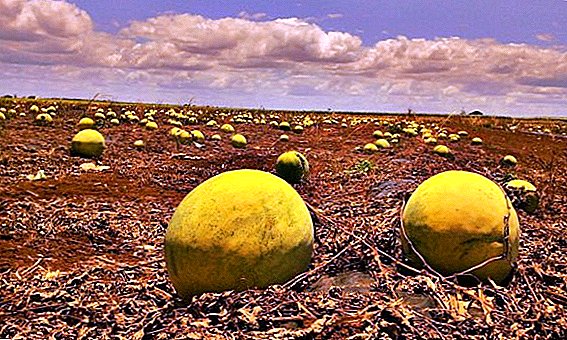 Melon may be subject to different fungal, bacterial and viral diseases, which leads to a decrease in yield and fruit quality. A variety of pests that feed on the sap of this plant also cause less harm to it. Therefore, to know about them is necessary. Today we look at the most common diseases of melons and how to treat them, and also talk about the pests of melons and how to combat them.
Melon may be subject to different fungal, bacterial and viral diseases, which leads to a decrease in yield and fruit quality. A variety of pests that feed on the sap of this plant also cause less harm to it. Therefore, to know about them is necessary. Today we look at the most common diseases of melons and how to treat them, and also talk about the pests of melons and how to combat them.
Melon diseases, methods of their treatment
Melon diseases in greenhouses and in the open field - a huge amount. Plants from them wither, give a bad harvest, or simply die. Sources of infection are seeds, plant residues, soil, weeds. And in order to prevent diseases and yield loss, it is necessary to treat the plants in a timely manner using appropriate methods.
Interesting fact! The great doctor Avicenna used in the treatment of colds and gout in his sick peels and melon seeds.
Anthracnose
 Melon leaves are covered with rounded brown or pink spots, which after a while increase in size. On the affected leaves, holes are formed, the leaves curl and dry. Scourge diseased plants become thin and brittle. Sick fruits are deformed and rot very quickly.
Melon leaves are covered with rounded brown or pink spots, which after a while increase in size. On the affected leaves, holes are formed, the leaves curl and dry. Scourge diseased plants become thin and brittle. Sick fruits are deformed and rot very quickly.
So that melons do not hurt anthracnose, it is necessary to remove crop residues from the beds in time, adhere to proper crop rotation, water plants moderately, loosen the soil, spray planting of melons with 1% bordeaux liquid or pollinate with sulfur powder.
Important! Such treatments need three to four, with an interval of 10-12 days.
Melon ascohitoz
 Fungal, the most harmful disease in the defeat of the root of the melon's neck. At the beginning, pale spots with numerous points (pycnidia) appear, which gradually increase and cover the entire root neck. The disease leads to a thinning of crops and a decrease in yield.
Fungal, the most harmful disease in the defeat of the root of the melon's neck. At the beginning, pale spots with numerous points (pycnidia) appear, which gradually increase and cover the entire root neck. The disease leads to a thinning of crops and a decrease in yield.
The disease can also affect leaves, stems and fruits. The tissues of the affected fruit become soft, black, and then dry. The affected stem darkens and breaks. The fungus can be stored on plant residues for two years.
The disease is caused by an excess of air humidity and soil and low temperature. Control measures: deep autumn autumn plowing, proper crop rotation, removal of plant residues, soil disinfection, cleaning of the diseased parts of the plant, fertilizing with potash fertilizers, treating the plants with Bordeaux liquid.
White spot (septoriosis)
This is a fungal disease in which white round spots appear on the plant. The central parts of the spots darken after the fruiting of the fungus is formed.
The disease loves wet rainy weather. The infection can be stored for a long time in the soil, on seeds and plant debris. Control measures: observe crop rotation, conduct deep autumn plowing of the soil (25-30 cm), destroy diseased plant residues, spray with 1% bordeaux liquid.
Root rot
 Most affected by this disease are weakened melon plants. The roots and stems of young plants become brown and eventually thin out. In the end, the cotyledons and leaves fade and the plant dies. The leaves of adult melons turn yellow and fade. The roots and the lower part of the stems become brown.
Most affected by this disease are weakened melon plants. The roots and stems of young plants become brown and eventually thin out. In the end, the cotyledons and leaves fade and the plant dies. The leaves of adult melons turn yellow and fade. The roots and the lower part of the stems become brown.
Control measures: crop rotation, removal of weeds, constant loosening of the soil, proper watering, disinfection of seeds before planting them in 40% formalin for five minutes.
Cucumber Mosaic
 This is a melon virus disease. Melon disease symptoms: green-yellow mosaic spots on young plants, twisted and deformed leaves, tubercles and bulges between the veins, which give the leaves a slightly corrugated appearance, old leaves die off, fruits fall off the plant, the warty surface of fruits, plants slow down in growth, cracks based on the stalks.
This is a melon virus disease. Melon disease symptoms: green-yellow mosaic spots on young plants, twisted and deformed leaves, tubercles and bulges between the veins, which give the leaves a slightly corrugated appearance, old leaves die off, fruits fall off the plant, the warty surface of fruits, plants slow down in growth, cracks based on the stalks.
The virus can be stored on the roots of weeds and transmitted to other cultivated plants of a gourd aphid. Seed virus is rarely transmitted.
Control measures: observe crop rotation, warm the seeds before sowing, destroy diseased plants, process the scissors and knives with which they cut the plants with a solution of potassium permanganate (5%), remove weeds, and fight with gourd aphids.
Mealy dew
 Perhaps one of the most common diseases of melon crops is powdery mildew. The stems and leaves of melons are covered with small white spots (up to 1 cm), but over time they can cover the entire leaf plate. The leaves become brown in color, become brittle, curl and dry.
Perhaps one of the most common diseases of melon crops is powdery mildew. The stems and leaves of melons are covered with small white spots (up to 1 cm), but over time they can cover the entire leaf plate. The leaves become brown in color, become brittle, curl and dry.
Control measures: timely destruction of all plant residues and weeds, proper crop rotation and processing of planting of melons with 80% sulfur powder at the first appearance of the disease (per 100 sq. m 400 g) with an interval of ten days, and the last treatment is carried out twenty days before harvesting .
Downy mildew (perinospora)
 This is a fungal disease of melons, which most often affects the leaves of a plant at an early stage. They appear yellow-green spots, which over time greatly increase in size. On the underside of the leaves, at high humidity, a gray-violet deposit (sporification of the fungus) is formed.
This is a fungal disease of melons, which most often affects the leaves of a plant at an early stage. They appear yellow-green spots, which over time greatly increase in size. On the underside of the leaves, at high humidity, a gray-violet deposit (sporification of the fungus) is formed.
Precautionary measures: decontamination of melon seeds before sowing. To do this, warm them in a thermos with water (45 degrees) for two hours. You can also do seed treatment with a 1% solution of potassium permanganate, soaking them in the solution for twenty minutes.
Planting with affected melons can be sprinkled a solution of urea (per 1 liter of water 1 g), 1% Bordeaux mixture (1 l per 10 sq. m.) Plants are treated with Topaz and Oxyh with an interval of ten days.
Gray mold
 This is a fungal disease that loves moisture and cold weather. Young ovaries of melons become watery, rapidly becoming covered with black sclerotia of the fungus and mold.
This is a fungal disease that loves moisture and cold weather. Young ovaries of melons become watery, rapidly becoming covered with black sclerotia of the fungus and mold.
The fungus remains in the soil for more than two years. The disease develops quite intensively at a temperature of + 15 ° C. When it's warmer outside, the disease slows down.
Precautionary measures: carefully weed, inspect and remove infected stems and leaves, water the plants only after removing all diseased stems, leaves and fruits.
Spray with the following solution: per 10 liters of water 1 g of zinc sulfate, 10 g of urea, 2 g of copper sulfate.
Fusarium wilt
 Fungal disease, which affects middle and late varieties of melons, reduces yields and degrades fruit quality. Patients with fusarial wilting fruits of melons are low-sugar, insufficiently juicy and fragrant and poorly stored.
Fungal disease, which affects middle and late varieties of melons, reduces yields and degrades fruit quality. Patients with fusarial wilting fruits of melons are low-sugar, insufficiently juicy and fragrant and poorly stored.
The disease manifests itself after two or three true leaves appear on the seedlings, as well as when the fruits ripen. Plants fade quickly, and the leaves lighten and become covered with gray spots. Diseased plants die after 7-10 days.
Precautionary measures: adhere to the rules of crop rotation, remove plant residues, weeds, infected plants, water enough plants, dig up the soil in autumn, disinfect seeds before sowing in 40% formalin solution for five minutes, grow melons in high beds, spray them with potassium chloride solution .
Interesting! The ancient Egyptians were engaged in the cultivation of melons as early as 2000 BC. Melon was considered a symbol of life, fertility and luxury.
Pests of melons, how to deal with them
No less harm than disease, melons bring a variety of pests. It is necessary to destroy them in a timely manner.
Gourd Aphid
 It is a sucking insect of green, yellow or dark brown color. Gourd aphid can produce about twenty generations of live larvae per season.
It is a sucking insect of green, yellow or dark brown color. Gourd aphid can produce about twenty generations of live larvae per season.
These pests of melons inhabit the underside of the leaves, spread over the entire surface and suck the juice from the leaves. Plants that are affected by melon gourds turn yellow, twist and dry. To keep the aphids as small as possible, clean the melon from weeds on time.
Melon fly
 This is the main enemy of melon plantations. Can affect up to 50% and more of the crop. Melon flies survive the winter, being in the larvae stage, at a depth of 15 centimeters.
This is the main enemy of melon plantations. Can affect up to 50% and more of the crop. Melon flies survive the winter, being in the larvae stage, at a depth of 15 centimeters.
The first melon flies appear in early June. Flies lay eggs in the flesh of the fruit, and inside the melon the larvae form, which are sifting through the flesh. As a result, the fruits rot very quickly.
Important! You can detect infected fruit by the holes in the skin of the melon, which are brown in color.Today, there are no resistant varieties of melons for melon flies. In order to prevent Melon plantations can be treated with the “Rapier” solution (two liters of solution per hectare) or “Zenith” (250 ml).
Plants are sprayed twice per season: during the appearance of the first leaves and in the period of looping. These drugs are also suitable for the destruction of existing pests. To destroy the larvae right after collecting ripe melons, all the unripe fruits are plowed together with the soil.
Spider mite
 These are small but very dangerous pests of melons. Yellow or yellow green in summer and red or orange yellow in autumn. Female spider mites overwinter in the soil under fallen leaves, on the leaves and weeds.
These are small but very dangerous pests of melons. Yellow or yellow green in summer and red or orange yellow in autumn. Female spider mites overwinter in the soil under fallen leaves, on the leaves and weeds.
Spider mites live on the underside of leaves, on buds, ovaries and young shoots. They suck the juice from the plant, after which parts of the plant turn yellow or red, and then the plant dies.
Fight spider mites in the following way: before sowing seeds, soil the soil with bleach, when the first true leaves appear on the sprouts, sprinkle them with BI-58 or Fitoverm, collect and destroy crop residues, make autumn plowing, alternate crops and destroy weeds.
Wireworms
 The planting of melons can be attacked by real (larvae of click beetles) and unreal (caterpillars of dark-browed insects) wireworms, which gnaw through the underground parts of the stems, respectively, young plants are dying. It is necessary to remove plant residues and weeds in a timely manner, since it is in them that the wireworms accumulate.
The planting of melons can be attacked by real (larvae of click beetles) and unreal (caterpillars of dark-browed insects) wireworms, which gnaw through the underground parts of the stems, respectively, young plants are dying. It is necessary to remove plant residues and weeds in a timely manner, since it is in them that the wireworms accumulate.
Gnawing scoops
 Caterpillars scoop scoops can live in the soil or on it. They damage the stalks of melons, which most often leads to the death of the plant.
Caterpillars scoop scoops can live in the soil or on it. They damage the stalks of melons, which most often leads to the death of the plant.
To fight with scoops, you will need to remove weeds and plant residues, dig up the soil deep in the fall, adhere to the rules of crop rotation, and also use the drug Arrivo, which destroys the burrowing scoop, for spraying the plants for twenty days.
Did you know? Melon in Japan give as an expensive gift.
In order to get a generous and healthy harvest of melons, it is necessary to get rid of their diseases in a timely manner and destroy pests.


